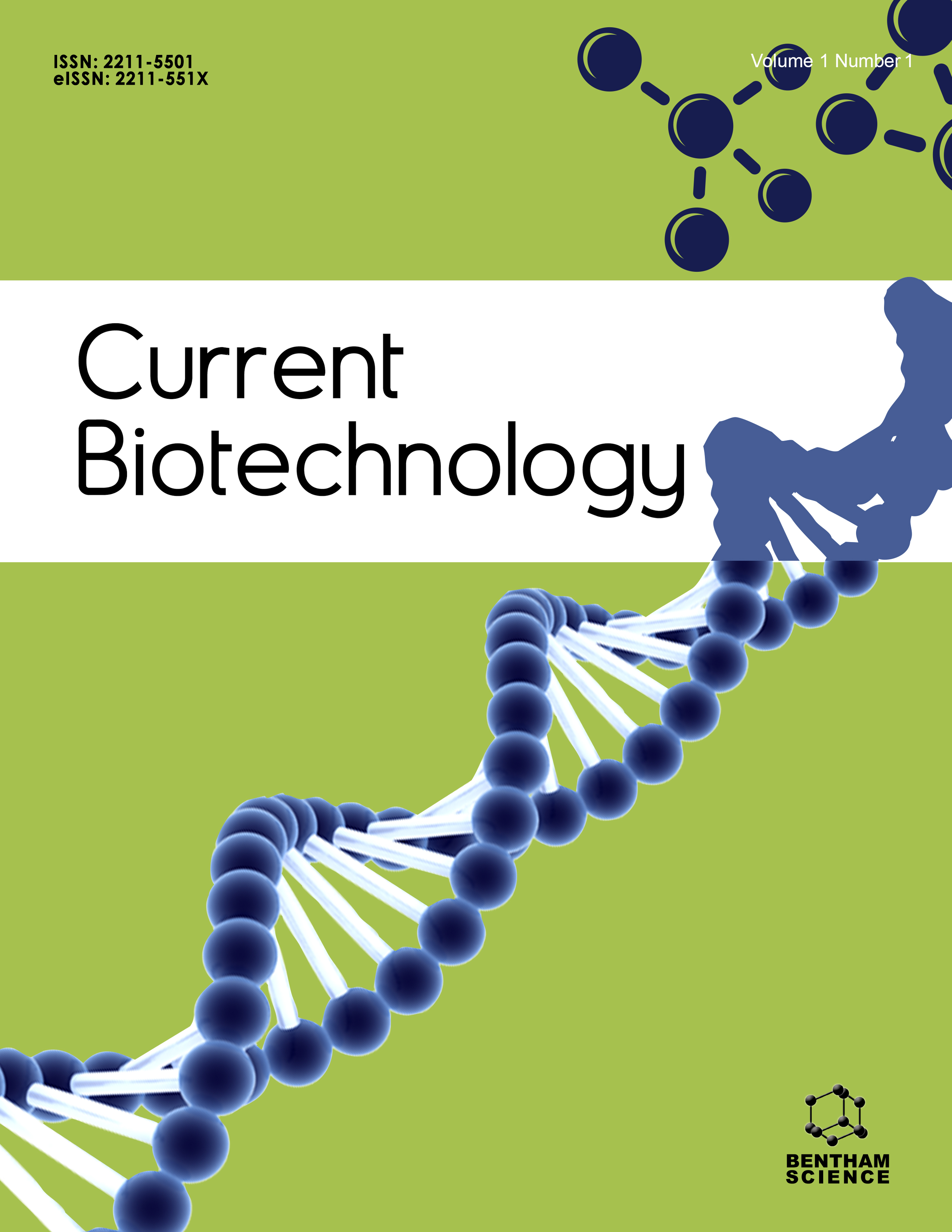- Home
- A-Z Publications
- Current Biotechnology
- Previous Issues
- Volume 3, Issue 1, 2014
Current Biotechnology - Volume 3, Issue 1, 2014
Volume 3, Issue 1, 2014
-
-
Metabolic Capabilities of the Members of the Order Halanaerobiales and Their Potential Biotechnological Applications
More LessAuthors: Daniel W. Roush, Dwayne A. Elias and Melanie R. MormileThe order Halanaerobiales contains a number of well-studied halophiles that possess great potential for biotechnological applications. The unique halophilic adaptations that these organisms utilize, such as “salting-in” mechanisms to increase their intercellular concentration of KCl, combined with their ability to ferment simple sugars, provides an excellent platform for biotechnological development over a wide range of salt lev Read More
-
-
-
Industrial Production of the Cell Protectant Ectoine: Protection Mechanisms, Processes, and Products
More LessAuthors: Hans Jorg Kunte, Georg Lentzen and Erwin A. GalinskiBacteria, Archaea and Eukarya can adapt to saline environments by accumulating compatible solutes in order to maintain an osmotic equilibrium. Compatible solutes are of diverse chemical structure (sugars, polyols, amino acid derivatives) and are beneficial for bacterial cells not only as osmoregulatory solutes, but also as protectants of proteins by mitigating detrimental effects of freezing, drying and high temperatures. Read More
-
-
-
Thermostable Glycoside Hydrolases in Biorefinery Technologies
More LessAuthors: Javier A. Linares-Pasten, Maria Andersson and Eva N. KarlssonGlycoside hydrolases, which are responsible for the degradation of the major fraction of biomass, the polymeric carbohydrates in starch and lignocellulose, are predicted to gain increasing roles as catalysts in biorefining applications in the future bioeconomy. In this context, thermostable variants will be important, as the recalcitrance of these biomass-components to degradation often motivates thermal treatments. The tr Read More
-
-
-
Selected Enzymes from Extreme Thermophiles with Applications in Biotechnology
More LessAuthors: Peter L. Bergquist, Hugh W. Morgan and David SaulEnzymes from extreme thermophiles that grow above 70 °C have a number of attractions in industrial applications. They are often highly resistant to denaturing conditions and are stable at elevated temperatures and over a range of pH values. There has been a widespread search for micro-organisms producing novel enzymes and where found, most publications (and research grant applications) promise that their superior p Read More
-
-
-
Biotechnological Applications of Bacterial Endophytes
More LessAuthors: Jesus Mercado-Blanco and Ben J.J. LugtenbergThis review starts with a brief introduction on bacterial endophytes. Only small fractions of rhizosphere and phyllosphere bacteria are able to live inside the plant. Endophytes are bacteria and fungi that can be detected at a particular moment within the tissues of apparently healthy plant hosts without producing symptoms in or on the plant. Possible traits required by these bacteria to enter the plant and live inside will be discuss Read More
-
-
-
Isothermal DNA Amplification by a Novel and Non-Ubiquitous Thermus Polymerase A
More LessA novel and non-ubiquitous thermostable DNA polymerase in Thermus antranikianii was expressed in E. coli, isolated and biochemically characterized. The enzyme here referred to as Thermophi, has a C-terminal polymerase domain and a proofreading 3′→5′ exonuclease domain, but lack the 5′→3′ exonuclease domain. The corresponding gene is apparently only found in some but not all Thermus strains. The initial Read More
-
-
-
Proteomic Exploration of Extremophiles
More LessAuthors: Sung H. Yun, Yeol G. Lee, Chi-Won Choi, Sang-Yeop Lee and Seung I. KimImprovements in genomic sequencing technology have accelerated the accumulation of gene information, leading to the emergence of proteomics as a powerful tool to study the functional genome. Specifically, the emergence of two technologies, two-dimensional gel electrophoresis (2-DE) and high-throughput protein identification using mass spectrometry (MS), was a milestone in the development of proteomics. Due to bacteri Read More
-
-
-
Psychrophilic Bacteria: Biodiversity, Molecular Basis of Cold Adaptation and Biotechnological Implications
More LessThe earth is a cold biosphere with a major part (> 85.0%) permanently exposed to temperatures below 5 oC. Antarctica, Arctic, high altitude mountains, glaciers and deep-sea are the major constituents of the cold biosphere. The cold biosphere provides habitats such as snow, permafrost, sea-ice, glaciers, oceanic waters and sediments, cold water lakes, soil and caves which are conducive for the survival and reproduction Read More
-
-
-
Protection Against Ionizing Radiation Induced Oxidative Damage to Structural and Functional Proteins by Semiquinone Glucoside Derivative Isolated from Radioresistant Bacterium Bacillus sp. INM-1
More LessAuthors: S. Mishra, A.K. Gupta, P. Malhotra, P.K. Singh, R. Pathak, A. Singh, S. Kukreti, H.K. Gautam, S. Javed and Raj KumarProteins and enzymes are the basic regulatory units in living systems. Radiation-induced damages in protein and enzyme structure can lose their regulatory and biocatalytic properties lead to radiation induced structural and thus functional impairment. In the present study we report in vitro radioprotective efficacy of semiquinone glucoside derivative (SQGD) isolated from a radioresistant bacterium Bacillus sp. INM-01. Radiati Read More
-
Most Read This Month
Article
content/journals/cbiot
Journal
10
5
false
en


